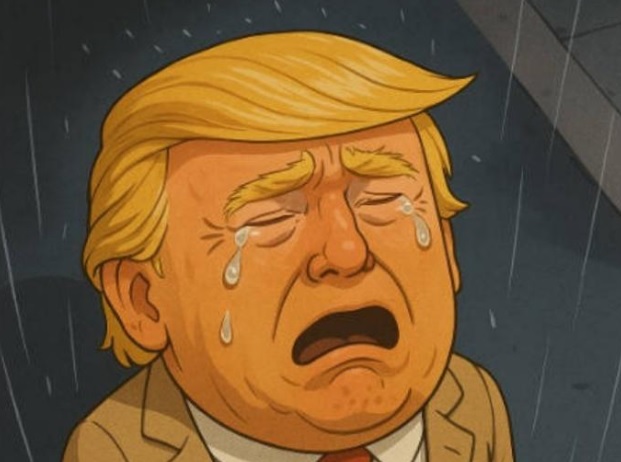The U.S. has preliminarily achieved its tariff negotiation targets, triggering a significant surge in the U.S. dollar and a decline in international precious metals. Is the dollar now entering a rebound cycle?
The top 10 opinions form chinese Netizen:
1. “Structural USD Strength Supported by Relative Economic Resilience
Proponents argue that U.S. Q2 GDP growth (2.9%) outpaced Europe (0.9%) and Japan (-0.7%), coupled with persistent core PCE inflation (3.2%), reinforces the Fed’s hawkish stance. This “high growth + high inflation” combo attracts capital inflows, sustaining USD strength through yield differentials.
2. “Short-Term Rally Driven by Tariff Deals, but Long-Term Uncertain”
The U.S.-UK tariff agreement and framework deals with the EU/Japan are seen as short-term catalysts. Markets anticipate reduced trade friction, boosting USD temporarily. However, sustainability depends on global recession risks and debt sustainability.
3. “Dollar Index Technically Testing Key Resistance”
Technically, USD index (~98.64 in July 2025) rebounded from June lows (~96.3), with key resistance at 99–103. A sustained breakout above 99 could confirm a cyclical uptrend, while failure may signal reversal.
4. “Policy Divergence: Fed Delayed Cuts vs. Global Easing”
The Fed’s projected 50bps cuts in 2025 lag behind ECB’s 160bps cuts and BOJ’s loose stance. This policy gap widens rate spreads, favoring USD carry trades and inflows.
5. “Tariff Windfall Masks Fiscal Risks”
Tariff revenues improve fiscal optics but fail to address U.S. debt-to-GDP (projected >130%). Foreign capital inflows ($311B in May 2025) provide superficial relief, yet debt-driven growth may cap long-term USD gains.
6. “Historical Parallels: 1980s-Style USD Rally”
Similar to the 1985 USD surge (driven by trade deficit fixes), current tariff-driven export rebalancing could fuel a multi-year rally. However, overvaluation risks persist if manufacturing reshoring stalls.
7. “Bearish Counterpoint: Debt Tsunami Undermines USD”
Skeptics note that the U.S. $36T debt burden—exacerbated by unfunded tax cuts—could trigger sovereign risk repricing. A weaker USD may follow if inflation resurges or foreign demand for U.S. assets wanes.
8. “Gold’s Slide Validates USD Momentum”
Gold’s drop to $2867/oz (Feb 2025) and silver/copper volatility reflect USD-driven commodity repression. Tariff-induced risk-on shifts further pressure precious metals, signaling USD bullishness.
9. “Geopolitical Filter: Tariff Fragmentation Favors USD”
U.S.-centric trade blocs (e.g., US-UK-EU pacts) could marginalize non-aligned economies (e.g., China), strengthening USD’s “reserve currency premium” amid supply-chain realignments.
10. “Contrarian Warning: Euphoria Overdone, Reversal Likely”
Optimism ignores latent risks: tariff implementation delays (e.g., India resistance), potential ECB/BOJ policy shifts, and overheated positioning. A corrective pullback to 94–96 is probable by Q4 2025.
Key Controversies Summarized
| Perspective | Core Argument |
|---|---|
| Bullish USD | Growth/policy divergence, tariff deals, technical breakout |
| Bearish USD | Debt overhang, recession risks, overbought positioning |
| Neutral/Uncertain | Short-term strength vs. structural fragility |





Okay, bet444login is pretty slick. Login was easy peasy. Selection is decent, and I found a few markets I hadn’t seen elsewhere. I will be using this website again and I recommend you give it a try! Find it here: bet444login